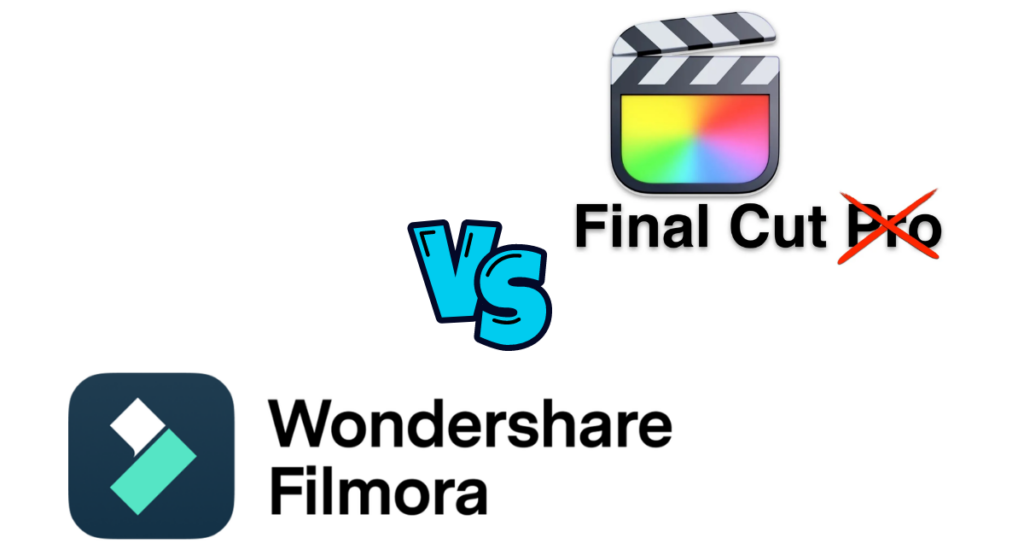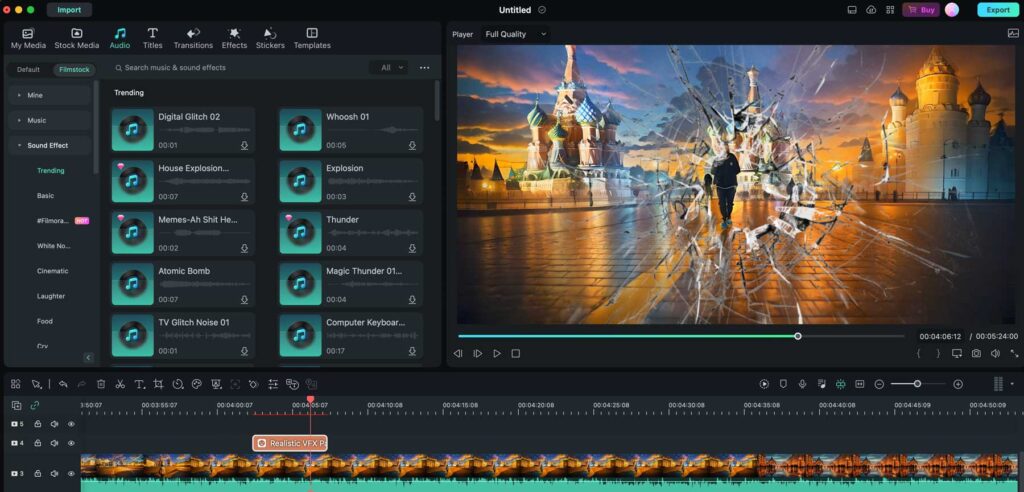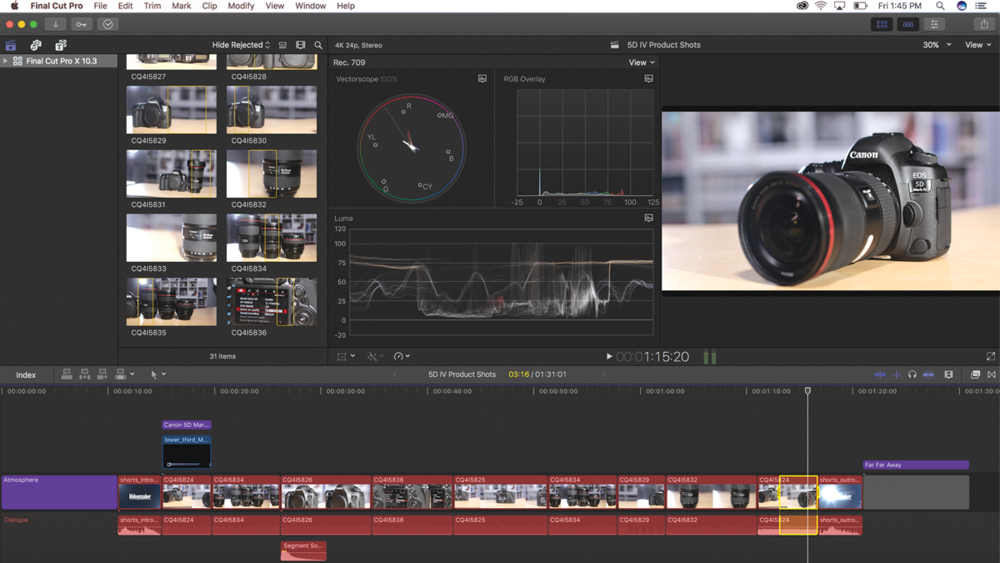Filmora vs Final Cut Pro in a Nutshell
Video content reigns in digital marketing today more than ever, so we decided it would be valuable to compare Filmora vs Final Cut Pro as they are very popular choices.
Filmora’s intuitive interface and AI-enabled editing make it easier to use for beginners and YouTube hobbyists, while Final Cut Pro includes a barrage of professional-grade editing tools, perfect for more experienced video editors.
Based on this knowledge alone you might already know which option may be more suitable for your needs.
But let’s take a deeper look at these programs and what they offer so you can make a more educated choice.
In-Depth Comparison Filmora vs Final Cut Pro
Choosing your video editing software can be overwhelming, especially with so many features available.
To make it easier for you, we’ll discuss in detail Filmora vs Final Cut Pro to help you decide which one best suit your video editing needs and goals.
| Feature | Filmora | Final Cut Pro |
| Target Users | Beginners, intermediate creators, YouTubers, social media content creators, educators, small businesses | Professional video editors, filmmakers, YouTubers with large followings |
| Ease of Use | Easy to learn with drag-and-drop interface | Steeper learning curve due to advanced features |
| Editing Tools | Basic editing functions (trimming, cutting, splitting), transitions, effects, titles, royalty-free music | Advanced editing features (magnetic timeline, multicam editing), robust colour grading, audio editing (multi-channel mixing, noise reduction) |
| AI Editing | AI Text-to-Video, AI Smart Cut, AI Background Removal | None |
| Presets and Templates | Over 10 billion stock media and 200+ presets. | Limited library of built-in presets and templates. Integrates with Motion for creating custom graphics and animations (actual number undisclosed) |
| Screen Recording | Built-in screen recording functionality to capture computer screen activity | No built-in screen recording feature |
| Social Media Optimisation | Pre-set video formats and aspect ratios specifically for popular social media platforms | Requires manual configuration for exporting to social media |
| Easy Green Screen Editing | Chroma key tools for removing green screens (functionality might be limited in the free version) | Chroma key tools for green screen editing |
| Motion Tracking | May require a paid plan to access motion tracking for attaching elements to objects in the video | Built-in motion tracking capabilities |
| Collaboration Tools | No built-in collaboration features | Seamless collaboration with other editors working on the same project |
| XML Import/Export | Not supported. | Supports XML import and export for project exchange with other editing software |
| Performance | Windows 7 to 11
macOS 10.15 to 14 Needs at least 2GHz Intel i3 CPU, 8GB RAM, and at minimum an Intel HD Graphics 5000 or Nvidia GeForce GTX 700. |
macOS 13.5 or later
8GB of RAM (16GB recommended) Metal‑capable graphics card (Intel-based Mac computers only) 5.9GB of available disk space Some features require a Mac with Apple silicon. |
| Platform Compatibility | Windows, Mac, Mobile | Mac (Apple silicon only) |
| Customer Support | Email/Helpdesks
FAQs/Forum Knowledge Base Phone Support 24/7 Live Rep Chat |
Email/Help Desk
FAQs/Forum Knowledge Base |
| Training Support | Educational Videos and Resources | None |
| Software Pricing | Free Version
US$19.99 monthly plan US$49.99 annual plan US$79.99 perpetual plan |
Free Trial
US$299.99 lifetime access |
Key takeaway: Filmora is more beginner-friendly with its library of presets and templates, while Final Cut Pro offers a powerful alternative to After Effects and DaVinci Resolve, as it streamlines narrative editing with its magnetic timeline and consolidates workflows into a single application.
Filmora is great for:
- Beginners and aspiring creators who want to learn video editing with an easy-to-use interface and affordable pricing, with the benefit of AI-powered features to streamline their workflow.
- YouTubers, social media content creators, educators, and small businesses looking to create polished videos without getting bogged down by the complexity of the software
Final Cut Pro is an excellent choice for:
- Professional editors and filmmakers working on demanding projects that require advanced editing features and performance.
- Editors and filmmakers who require heavy colour grading options and advanced motion graphics capabilities similar to After Effects.
Filmora Vs Final Cut Pro Summary
Comparing Filmora vs Final Cut pro is like comparing apples and oranges – they are both fruit but cater to different tastes.
Filmora
shines with its user-friendly interface, rich editing tools, and vast library of pre-made templates. It also has innovative AI features like text-to-video and smart cut. This makes it a great choice for beginners and aspiring creators on a budget, and busy professionals seeking an efficient and creative editing workflow.
Filmora’s affordability and platform compatibility (Windows & Mac) make it an accessible option for many users.
Final Cut Pro
reigns in professional editing circles. Its unmatched editing power, exceptional performance on Apple silicon Macs, and advanced features make it a great choice for professional editors and filmmakers.
Collaboration tools and XML import/export further solidify Final Cut Pro’s position in professional workflows, making Final Cut Pro’s feature-rich environment advantageous in elevating your projects to a whole new level, but be prepared for a steeper (but worth it) learning curve and a one-time purchase cost.
When choosing between Filmora vs Final Cut Pro, the best software is the one that empowers you better to tell your stories through captivating videos. Now is the time to explore their free trial options and have fun on your video editing journey.
























































